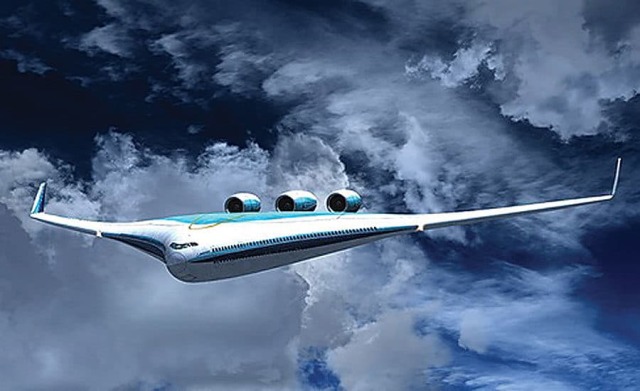The economic war that began this year may last at least decades and raises the question: what do we fly? The "Dry Superjet" is too small and depends on imported parts. The MS-21 is difficult to quickly launch into a series, but at the same time it is promising. The Tu-204 is too voracious. In addition, all these Russian devices — as well as foreign ones — have fundamentally irremediable problems with the high price of flights. Will Russia decide on really radical steps in the development of the local aviation industry? Naked Science will try to understand this issue.
One of the first steps of the West's economic war against Moscow was the ban on the export of airliners and spare parts to Russia. The goal is not entirely clear. After all, it is known from Iran's experience that, despite the ban on the import of spare parts there, aircraft from even a small country with an average level of industrial development can fly with quite decent ( not many plane crashes have occurred in Iran over the past 10 years) safety. On the other hand, many other Western measures of economic warfare are also not always clear — at least at the first approximation.
Let's turn to a more pressing question: what to fly on now? Russia is not Iran, its needs for airliners will only increase. With a high degree of probability, the country's GDP will begin to grow from 2023, which means that tourist flows to all Egypt, Turkey and other Thais will also not go anywhere. The world is still more than 80% open to Russian airliners - and will be open further, apparently. That is, Russia needs new planes — and a lot of them. That's just what?
MS-21 vs Tu-204
Kazan regional lobbyists have already tried to talk about the revival of the Tu-204. Not a bad car for its time, but nevertheless it had serious hereditary problems. The Tu-204 (like the Tu-154 before them) spent too much time in the parking lot — more than imported analogues. This reduced the profits of the air carrier: it is more profitable for him to recapture his investments in the plane as soon as possible, receiving from him a maximum of passenger-kilometers per year.
If one plane is serviceable 95% of the time, and the other is 65% of the time, then you can buy two more reliable ones instead of three less reliable ones. And that is why many Russian airlines chose imported airliners at one time.
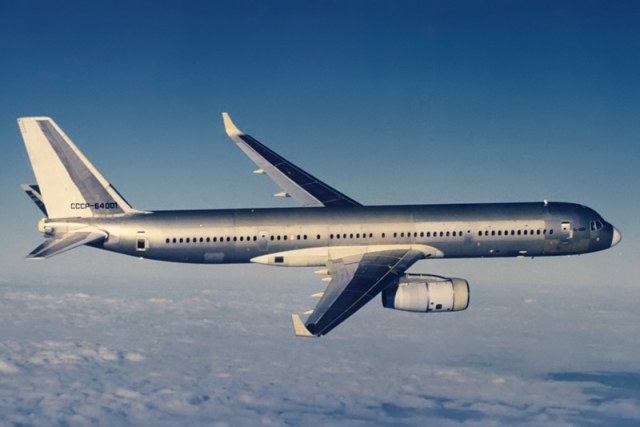
Tu-204, wing extension 9,6. There are wing tips, which were not used in our civil aviation before the Tu-204. It was a very good car. For 1989, when it made its first flight (pictured), aerodynamically it should even be called advanced. Alas, in the 1990s, she had no chance of a series: the country was badly out of planes
Image source: Wikimedia Commons
The Tu-204 does not necessarily have to be as "brittle" as its predecessors. Nothing prevents us from making engines and other systems with reliability no lower than that of Western analogues: after all, it is known that new Russian-made combat aircraft are not inferior to Western ones in terms of technical readiness. Given that the manufacturers of both combat and civilian aircraft are often the same companies, there is no doubt that this is achievable for the local civil aviation industry.
A more serious problem lies elsewhere: the Tu-204 was designed a long time ago, for other avionics systems. If you release it now, they will have to be redesigned for a new element base and changed. And this task is comparable in complexity to the development of an aircraft from scratch.
The question arises: why do this if the MS-21 project has been in operation for many years, and, unlike the Tu-204, its design is more modern? In particular, it has (for the first time in the world) a fully carbon fiber wing. This will reduce fuel consumption by up to 8%, which will clearly affect the price of the flight.
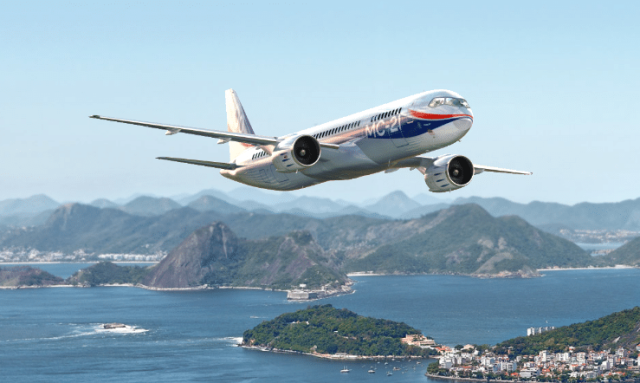
There is a shortage of successful MS-21 photos, so computer graphics are still in the picture. Nevertheless, a number of real features of the aircraft are clearly visible: for example, the absence of wingtips on the wings of a large elongation. The developers of the MS-21 abandoned the wingtips because they require a significant increase in the strength and weight of the wing
Image source: Wikimedia Commons
Fuel consumption reduction was achieved here not only due to the greater lightness of the wing, but also because of its unusual parameters. Carbon fiber is a harder material than aluminum alloys. Therefore, the ratio of the wingspan to its average chord — the same wing elongation — in the MS-21 is 11.5. If such an elongation was obtained from a metal wing, it would have to be made much thicker by raising the aerodynamic drag. Therefore, a typical airliner has a wing extension of about 9-10. The higher this indicator, the lower the inductive resistance at low speeds and the lower the fuel consumption for them.
It seems that 8% is not so much. However, during its expected life ( up to 80 thousand flight hours for a glider), an airliner of this class "eats" 140 thousand tons of fuel. The carbon fiber wing will reduce this figure is 11 thousand tons.
Of course, the Tu-204 lobbyists have an answer ready here. "A purely ostentatious thing,— says Adviser to the Prime Minister of Tatarstan Nazir Kireev. — Why doesn't any country in the world do this? Because it's not necessary." However, Kireev does not provide any figures showing how a change in wing lengthening might not lead to a decrease in air resistance for the MS-21. And this is a sure sign that he probably does not have such figures.
In general, the construction "there is no such-and—such abroad, so it is not necessary" is a sign of an illiterate (outside the MBA program) post-Soviet manager (it sounds about as strange as "there is no such-and-such in Russia yet, so it is not necessary"). Let's recall a simple example: supercooled rocket fuel. After Korolev, it was not used even in our country, let alone abroad. But not because it was not necessary, but because to use any really advanced technology, you need a manager's brain capable of understanding the need for this technology.
In the domestic space industry, after Korolev, there was no such brain in sufficiently high positions. From this, the Russian "Angara" flies on uncooled fuel these days. There were no such brains in the West either — up to Elon Musk. But this decision cannot be called "unnecessary" in any way. After all, it is thanks to him that SpaceX has seriously increased the payload of its rockets.
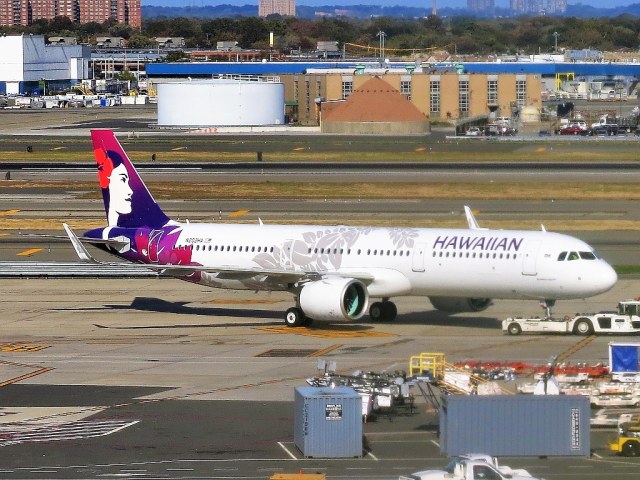
The wing elongation of the A320neo is 10.45, noticeably lower than that of the MS—21. So to compensate, in order to reduce drag at low speeds, Western European designers used wingtips
Image source: Wikimedia Commons
Moreover, as often happens with people who tell lies, Kireev is not quite aware of the foreign practice of aircraft construction. Boeing has also been actively trying to introduce carbon fiber into the wing in recent years, and recently — for the first time in the world for airliners — has made of them the most important structural part of the wing, its caisson.
The reasons are the same as for the MS-21 all-carbon wing: it's easier to increase elongation this way. The company did not create an entirely carbon fiber wing (with a skin) not because it would not like to increase its elongation. But because it is not so simple, it is a truly ambitious task.
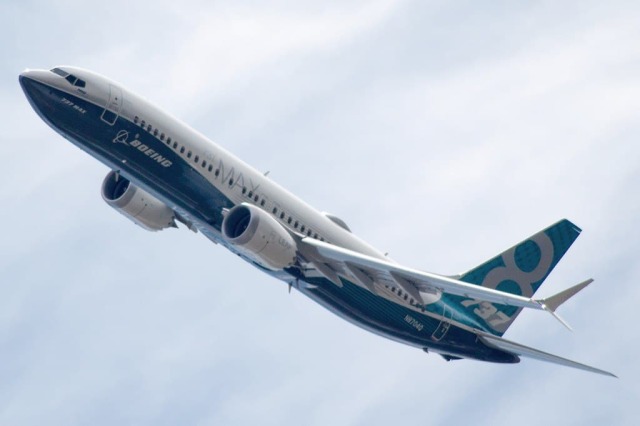
The B737 MAX 8 has a wing extension of only 9.45. To reduce drag, two-tailed wingtips are used
Image source: Wikimedia Commons
It turns out that the choice of Tu-204 and Tu-214 instead of MS-21 does not make sense. It will take years to fine-tune them. Meanwhile, the developer of the MS-21 plans to launch it into a series — already with domestic engines and a domestic carbon fiber wing — in 2024. Even if the launch is postponed for a year, it will not be possible to resume production of the Tu-204 faster — this is indicated by the very long history of restoring production of the Tu-160 strategic bomber in Tatarstan.
Is MS-21 also not a magic wand?
The main problem is not what to choose — Tu-204 or MS-21. It's very easy to decide here: the MS-21's aerodynamics are so much better that you don't have to choose.
The key difficulty is different: the MS-21 will also not solve the key problems of the aviation industry. As the former head of the company Andrey Kalmykov, who resigned from Pobeda after the start of the economic war, notes, the main difficulty of Russian airlines is not to have flying planes. This is just quite real: the extraction of spare parts by the same Iran is more than an eloquent example.
The main problem is the cheapness of flights. Large companies fly the cheaper the more often. The decline in traffic to Europe will be quite difficult to compensate for in the coming years. Fewer flights means less return per unit of capital invested in the fleet. Less return per unit of capital is higher than the price. Higher prices mean fewer people buy tickets, which means fewer flights again. And so on in a circle.
Of course, the state can partially close the issue with subsidies. But is it completely? And for how many years?
There is only one cardinal solution to this big problem. We need to find technological solutions that allow us to "drop" the cost of flights much more than even the carbon fiber and supertechnological MS-21 wing. Fuel costs in any airline are 40%, and with expensive oil — even higher. Reducing fuel consumption from the new wing by 8% can lower the average ticket price by three percent. Seriously. And at another time it could be called a success. But in the conditions of an economic war that will last for the foreseeable future, this is absolutely not enough.
There is a way out: there are solutions in the aviation industry that can reduce the price of a flight by a quarter. But here's the problem: this is the way of Elon Musk, and with Masks there is a shortage in the world. Let's look at this solution in more detail.
The economy of the village was on the same plane with ecology… But she didn 't fit in
The main component in the ticket price is fuel, then taxes, then depreciation of the cost of the aircraft (or rent for it), that is, the cost of returning the invested capital. It is useless to reduce taxes: they exist in all areas of business, abandoning them for aviation will mean subsidizing it by society, which will not solve the problem. You can drop the cost of aircraft only by releasing them in a very large series, but it's not easy. It is possible to create supersonic airliners, which will increase the return per unit of invested capital per unit of time, but such aircraft require more fuel. The tail pulled out — the head got bogged down.
It turns out that the only thing that can really reduce the price of an air ticket is fuel. Kerosene costs much more than a dollar per kilogram. How could it be replaced? The simplest option, tried by the domestic aviation industry decades ago, is methane. The advantages are obvious: it burns cleaner, gives fewer microparticles that kill people. In addition, it costs two to three times less than kerosene.
When we say "two or three times", we mean, of course, not natural gas itself in its original form: in terms of unit calorific value, it is many, many times cheaper than kerosene. We are talking about liquefied natural gas (LNG), since it takes a lot of energy and money to cool it to minus 170 degrees.
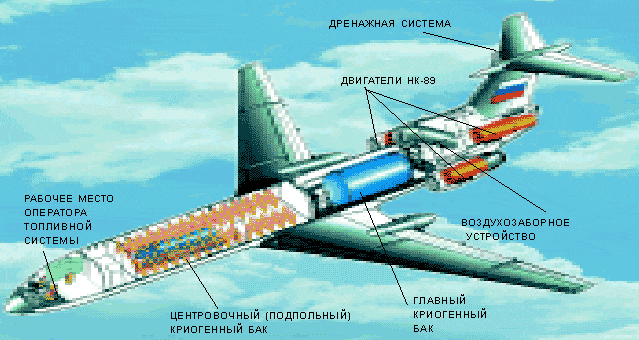
Experimental Tu-155 with its methane tank in the cabin. It is clear that it has noticeably less space for passengers than the kerosene version of the same aircraft
Image source: Wikimedia Commons
You can't refuel an airplane with "ordinary" methane gas: the cylinders are too heavy, and they take up a lot of space. It is a tank for liquid fuel that is needed, and with thermal insulation five centimeters thick (this was on the Soviet methane Tu-155).
And this is where the difficulties begin. Methane gives 18% more energy per unit of weight during combustion than kerosene. It means that even despite the need for thermal insulation of the tank, the mass of the fuel system of a methane aircraft will most likely be noticeably less than that of a kerosene one. But the energy consumption per unit volume of liquefied gas is only 6.17 kilowatt—hours per liter. And kerosene has 9.72 kilowatt-hours per liter. It turns out that kerosene requires 1.58 times less space. Taking into account the walls with thermal insulation, methane tanks should occupy 60% more volume than kerosene tanks.
In addition, to reduce heat loss, it is better to make methane tanks "in one piece". Consequently, they cannot be partially carried out into the wings, as they do with tanks in kerosene liners. It is necessary to find a lot of space in the fuselage: only here there is sufficient volume to accommodate a large tank in one piece. The average-sized airliner A320peo carries 29.7 cubic meters of kerosene, MS—21 - 24 cubic meters. A methane aircraft with a similar range will require a single tank for 38-45 cubic meters.
This means this: all existing airliners — and even promising ones like the MS-21 — are not suitable at all for switching to methane. Alas. And here we did not discover America: the Tu-155, an airliner of the usual scheme, was tested with methane tanks back in the USSR. At the same time, they discovered that almost 30% of the passenger compartment has to be occupied with liquid methane. And even take away space from the luggage compartment.
There is little use from such a "methanolet". Yes, fuel for it can be three times cheaper than kerosene, but this will reduce the cost of the flight by only 30%. And if tickets can be sold for 30% less, what is the gain here?
"Belukha" or "carrier fuselage"?
And yet, it seems that we are facing a solvable problem. Modern aircraft were originally designed for refueling with petroleum products, so there is no place for liquefied gas in the fuselage. So, it is necessary to design the aircraft initially for gas. From a clean slate.
Unfortunately, big bosses are usually as conservative as possible and are used to working with "reliable, proven grandfather methods." That is why, for example, all electric cars before Tesla were "designed" by cramming batteries into the ready-made design of gasoline models. Of course, this took up space from the cabin and trunk, but it still did not work out for a normal range. The same method was used in the Soviet methane Tu-155: they took an ordinary plane and put the tank where there was a place, taking it away from passengers and luggage.
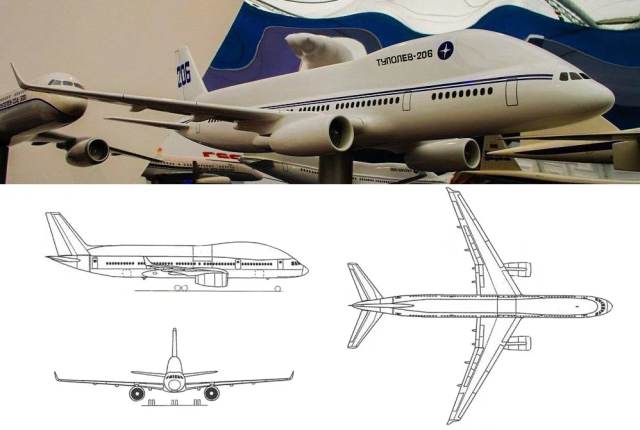
The Tu-206 was, in fact, something like the Tu-204 with a hump for a methane tank in the upper part of the fuselage
Image source: Wikimedia Commons
If we want to solve the problem, we need to design an aircraft with a different fuselage shape. In the 1990s, the Tupolevs tried to do this almost without alterations: they placed the tank in a protruding "hump" in the front of the fuselage. The resulting 210-seat airliner project was unofficially called "belukha", officially — Tu-206. The idea of the designers was clear: the 1990s were coming, there would not be enough funds to seriously redesign the aircraft. The protruding tank increased fuel consumption by 15%, but taking into account the fact that methane per unit mass gives 18% more energy, the weight of the aircraft at the same range would remain unchanged. And since LNG is much cheaper than kerosene, the savings would still come out, despite the aerodynamic imperfection of the aircraft.
This option, frankly speaking, could only appear out of desperation. As we noted, in the 1990s, mortality in Russia increased by 30% and did not fall to zero - it is clear that no one would have given money for serious R&D in such a catastrophic situation. So then such a "humpback" project was also suitable.
But now, a quarter of a century later, it would be more reasonable to design a truly new car - one that could be produced for decades in a row.
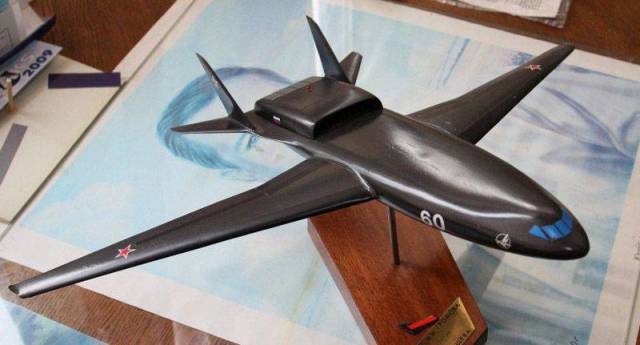
The M-60 was born from a military project. Nevertheless, its higher aerodynamic qualities and a more spacious fuselage are certainly advantages in peaceful life
Image source: Wikimedia Commons
At least one suitable project of this kind was proposed in the same USSR. At first it was the M-60 strategic bomber, but in the nineties, a draft design of the M-60 "Perun" airliner appeared on its basis. The basic version was supposed to accommodate 214 people. The key feature is a very wide fuselage, which makes a great contribution to lift. Wings, by the way, are also of great elongation (the load on them is reduced here). Actually, the developer planned this to improve the aerodynamic quality .
The aerodynamic quality, if explained in simple words, is how many kilometers the plane will fly with the engines turned off, losing one kilometer of altitude. Of course, no one plans to turn off the engines of the aircraft. But the higher this quality, the less fuel these engines spend. For comparison: the aerodynamic quality of a brick or scrap is zero, and modern record-breaking gliders are above 60. In the M-60, it is estimated at 21, in the MS-21 — at 18.2. The serial Boeing B737 MAX 8 has 15.0, and the Airbus A320neo has 16.3.
Aircraft with a supporting fuselage. similar CBY-3s in the video were built back in the 1940s. The problem was that it looked very unusual, and it gave advantages only for large cars. But a rare manager will risk making an order for a large car, so unlike all the others / © YouTube
But the wider fuselage gives the M-60 another major advantage: internal volume. Of course, there is no "free lunch" here either: the plane was designed for kerosene, and a tank of even 38 cubic meters (equivalent to MS-21 kerosene tanks) under the floor of the passenger compartment will dramatically reduce the possibilities for transporting luggage.
However, in any case, it will not be necessary to throw out 30% of passenger seats, and this is very important. In addition, such a fuel reserve will be 15% lighter than kerosene, which will reduce the maximum weight of the aircraft — that is, the material consumption of its chassis and some other elements.
The most important thing is that fuel for it will cost two to three times cheaper than modern kerosene liners. This means that the cost of tickets can be 20-25% less. Lower prices — higher occupancy of the aircraft, more aircraft in the series. Higher occupancy — higher profit, more aircraft in the series — lower their price per piece.
Flying wing: the best option
But the M-60 is still a compromise aircraft. In fact, this is the usual scheme of airliners: "the fuselage carries the payload, the wings carry the fuselage in the air." The whole difference is that the fuselage is slightly wider here, so it creates more lift.
But there are also more radical projects: a flying wing. This scheme, where the main lifting force is created by the fuselage, made in the form of a relatively thick wing. The Russian Central Aerohydrodynamic Institute has long noted that the transition to such aircraft will raise the aerodynamic quality by 20-25%. This would make sense with kerosene.
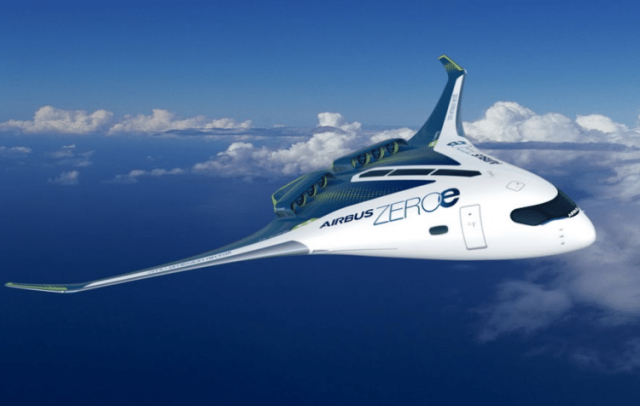
The concept of the Airbus hydrogen scheme "mixed wing" (a kind of "flying wing"). The company believes that it will be possible to accommodate up to 200 passengers, and the range will be at least 3,700 kilometers. Similar in capacity, a conventional A321 (on kerosene) has a range of 2000 kilometers more. But if this concept of a flying wing was on liquefied methane, its range would be no worse than that of an aircraft on conventional fuel. Alas, Western companies will never do this: it is unacceptable for them for ideological reasons, since methane forms carbon dioxide during combustion
Image Source: Airbus
In the case of a methane aircraft, the "flying wing" layout is even more important than simple economy: a record internal volume is created here. In its central part, you can place a methane tank that allows you to fly 10-15 thousand kilometers. But there will still be more room for passengers than in today's liners, leading a titanic struggle to get away from 17-inch seats to 18-inch-wide seats.
It should be clearly understood: there have never been large passenger liners with either a carrier fuselage or a "flying wing". Both types of structures have remained in draft designs for decades, since they differ greatly from existing ones. And if the carrier fuselage at least has a similar control in flight to the existing one, then the "flying wing" needs a significantly redesigned in-flight stabilization system.
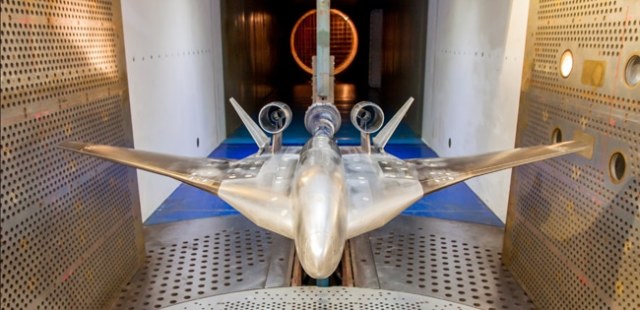
The concept of a flying wing of the domestic TsAGI, ten years ago. The aerodynamic quality of this design is 23, that is, much higher than that of the MS-21. In addition, the volumetric fuselage allows you to solve the question of where to place the methane tanks. One problem: government officials are essentially the same hired managers as employees of large Western companies. This means that most of them have the same problems with decision-making, which we will describe in the next section
Image Source: TSAGI
For the reasons described above, in practice, the choice between a traditional MS-21 aircraft carrying a fuselage (like the M-60) and a "flying wing", like the Boeing 754 Husky concept from the 1970s, is not even worth it. In the conditions in which the Russian aviation industry finds itself, it is necessary to work out all possible options at the same time. MS-21 is in a high state of readiness. Therefore, despite the limited range of 6,400 kilometers (Moscow — Khabarovsk, no further) and expensive fuel, it must be brought to an end.
Along the way, it is necessary to direct the efforts of all capable design bureaus to projects of "methane" aircraft with a supporting fuselage, as closer to implementation, and "flying wings" as more promising solutions. And only then, looking at what they got, at the wind tunnel purges, at the results of the first tests of the demonstrators, it is worth making decisions about who to go to the series.
Why optimal options are unlikely
Of course, the most likely scenario for the development of the event is completely different. The MS-21 with domestic engines and replaced avionics will go into production, if not in 2024, then in 2025.
However, if the aviation industry is left without harsh pressure from customers demanding methane aircraft, it will never develop them. Or he will do it along the line of least effort — like, say, the Tu-206. It is understandable: as one of the greatest economists of the last century, John Kenneth Galbraith, noted, the task of a hired manager in a large company is not to maximize profits, but to minimize his personal risks for the decisions he personally makes. Any technical innovations are a risk. That is why Boeing and Airbus have been telling since 1991 how they want to switch to the "flying wing", but they themselves will never switch to it.
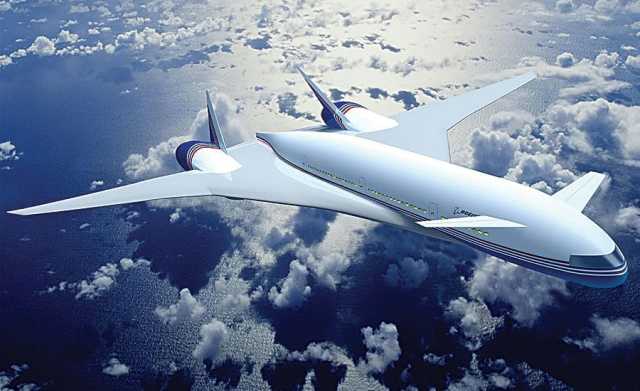
Boeing Sonic Cruiser is a typical example of why it is difficult for a large corporation to implement something really new. A well-designed aircraft was supposed to fly 15-20% faster than conventional ones, with a range of 11-19 thousand kilometers and fuel costs at the level of conventional aircraft. However, hired managers do not like to take risks, so the car with advanced aerodynamics never got a chance to get off the ground
Image source: Wikimedia Commons
Similarly, General Motors once "hacked" its own serial electric car in favor of conventional ones: with those there are fewer risks for effective managers. Well, then an unnamed manager Elon Musk came to the market and began actively squeezing GM and the rest out of the market — there was nothing wrong with that for those who "stabbed" an electric car from GM.
By that time, they had already left their previous place of work. After all, a typical hired manager spends several years in the company, and its competitiveness in the long term is simply not interesting to him.
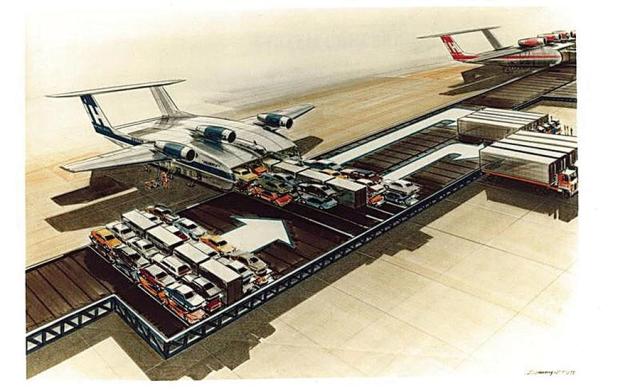
As the Husky Model 734 shows, the same Boing has known since the 1970s that the fuselage of an aircraft can be made load-bearing and very spacious. But what is the use of knowledge if your conformity does not allow you to apply it?
Image source: Wikimedia Commons
All the same factors fully determine the development of the aviation industry today, because there is no Elon Musk in it and is not expected. Accordingly, it is not necessary to expect the appearance of methane aircraft in Russia. This means that the forecasts of Andrei Kalmykov, who left the post of the head of Pobeda at the end of February, will come true: you can not wait for cheap flights in our country. There is no way to pull them out on one state subsidy.
